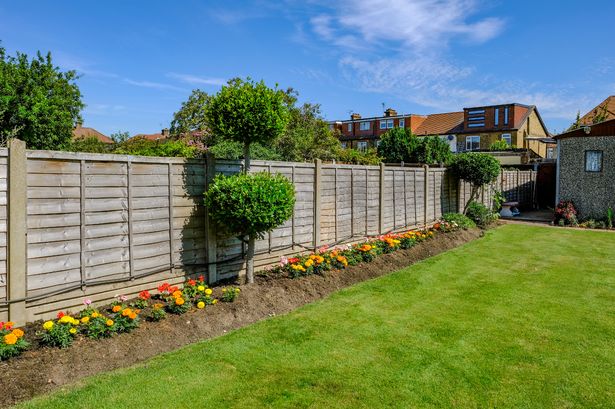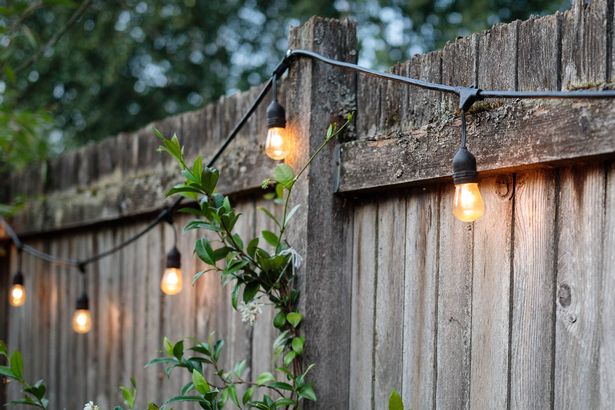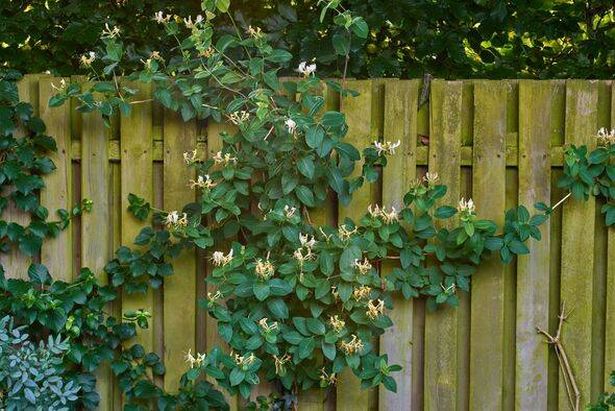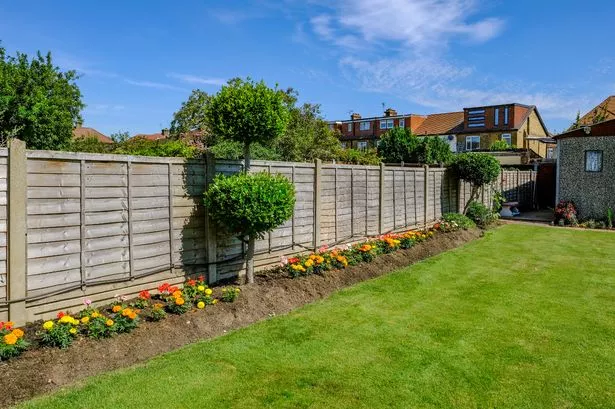Garden accessories are a great way to spruce up an outdoor space for a more inviting area, but homeowners have been warned that one popular item could land them in hot water
10:47, 05 Aug 2025

With summer in full swing and garden upgrades on people’s minds, garden accessories are a brilliant way to make your outdoor space more welcoming. However, one common accessory comes with a stark warning.
Fairy lights are a cost-effective choice for creating an atmosphere in your garden, particularly on summer evenings. However, gardeners have been cautioned that draping lights on their fences could get them in trouble.
While you might believe hanging a string of lovely lights along the fence is innocent, a specialist has issued a warning with the problems it can cause. It comes after Brits are told to never put one banned item in garden bins as you could face punishment.
READ MORE: Once-in-a-lifetime chance to own your own ‘fairytale-like’ castle – but you’ll need £895,000READ MORE: ‘I visited popular London park and couldn’t believe how much deck chair hire cost’

Experts have clarified that minor alterations like attaching fairy lights or a bird box to your side of a neighbour’s boundary fence are not quite as simple. In fact, all changes need consent from your neighbour, reports the Daily Record.
A boundary fence between two properties frequently causes neighbourly rows, with bewilderment over legal duties and doubt about who is responsible for maintaining which boundary fence. A recent survey by Ronseal revealed that 72 per cent of UK homeowners confess their fence requires some type of repair or replacement, while a quarter regard themselves as fence proud.
But it’s not merely about street appeal, UK Google searches for “fence rules” are up 25 per cent year-on-year, as confusion increases over legal obligations and what homeowners can genuinely do to a shared boundary. Ronseal’s resident DIY and fence expert, Jimmy Englezos, has stepped in to clarify the rules around fence and garden maintenance.
Before undertaking any maintenance or structural work on a boundary fence, it’s crucial to establish who owns it and who is responsible for its upkeep. Jimmy advised: “When looking to paint your fence, it’s important to find out where the boundary lies between your homes and who owns each fence.
“If you’re unsure, a good place to start is checking the deeds you received when you bought the property – you’ll often see a ‘T’ indicating which fence side is your responsibility to maintain.
“If the land registry states that you are the sole owner of the fence, then you’re free to make any alterations you like, including painting it. If your property is listed or on designated land, check with your local authorities first, as restrictions may apply.
“Equally, a ‘H’ can often be found on the boundary between both properties, which indicates that the fence is a joint responsibility between neighbours”. Jimmy has also outlined five common garden updates which may require neighbour approval before the work begins…

1. Growing plants up your neighbour’s fence
“Growing plants up a boundary fence can be a great way to bring life to your back garden and improve privacy levels, however, it’s important to consider whose fence you’re utilising. Plants either leaning against a fence or growing up the panels can become heavy and eventually weaken the fence, causing it to collapse.
“If your neighbour owns the fence you share, you must seek permission before you plant climbing plants against it, attach any trellis fixtures, or lean any pots against it.
“Equally, if any plants or trees encroach into your neighbour’s garden, they are entitled to trim these back to the boundary and vice versa. In this instance it is important to be aware that trimming beyond a boundary could see you taken to court for property damage so it’s important to keep an open dialogue with neighbours before taking any action.”
2. Painting or staining a boundary fence
“If it’s your neighbour who owns the fence, you’re not legally entitled to make any cosmetic changes like painting or staining, without obtaining verbal permission from them first, even if it’s only the side facing your garden that you’re altering.
“As painting and staining can help seal a fence and protect it from the elements, therefore prolonging its lifespan, most neighbours will be happy to give permission as long as painting or staining is tackled with care, to ensure no paint bleeds through to their side.
“If you do experience resistance from neighbours, a compromise may be to paint only the front facing fence panels and not the sides – to ensure your choice of paint or stain isn’t visible at all from your neighbours garden, or alternatively, to use the same paint/stain used by your neighbours for consistency.”

3. Repairing broken panels
According to the study, a tenth (11 per cent) of Brits said a neighbour’s fence needed complete replacement, 7 per cent noted that structural repairs were required, and another 4 per cent claimed their neighbour’s fences needed cosmetic repair.
Jimmy explains what to do in this situation. “Even if a boundary fence needs to be completely replaced, you’re still not legally allowed to repair it without seeking permission first, if it’s owned by your neighbour.
“It’s best to start by having a polite conversation about the work that’s required. Some homeowners offer to split the costs, despite not owning the fence, especially if it means they also have a say and a view of the type of fence that gets installed.
“However, if that doesn’t work, and the damage is posing a safety risk to your property, then you may need to consider seeking legal advice.
“Another option, if you’re after a quicker, although more costly, solution that puts you in control of the situation, would be to sacrifice some of your own perimeter land to install your own fence.
“It’s also worth noting if you’re planning to install a new fence, that in the UK, back garden fences must be no taller than two metres, otherwise you need to seek planning permission from the local authority.”
4. Hanging decorations from a neighbour’s fence
“If it’s your neighbour who owns the fence, you must seek permission from them before making any changes to the side facing into your property, this includes decorative modifications like hanging fairy lights, or drilling holes to attach mirrors or hanging bird feeders.
“If your neighbour does give permission, and your alterations cause structural damage, for instance hanging a mirror that’s too heavy for the fence, you may be liable to cover the cost of repair or replacement of the fence.
“If you own the fence, you can decorate the area however you like, as long as it doesn’t place your neighbour or their property at risk.”
5. Planting a tall tree near a neighbour’s fence
“If you’re thinking of planting a tall tree near a shared fence, it’s best to speak to your neighbours beforehand and seek permission as it could disrupt their right to light if this impacts the light previously enjoyed in rooms of your neighbour’s home.
“Secondarily, over time, the tree’s roots could grow deeper and spread into the neighbouring garden, potentially causing structural damage with the possibility of them then having the right to pursue legal action against you.”
READ MORE: Mountain Warehouse’s £220 down jacket that ‘rain rolls off’ plummets to £60 in flash sale









